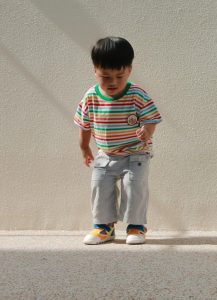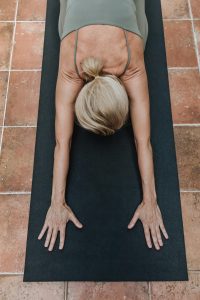3.7 Die Körpergröße und Haarlänge

Hallo alle zusammen!
Zum Aufwärmen machen wir unseren Tagesminiplausch und eine Wiederholung.
Wiederholung
In the previous lesson you learned more body parts and how to count using the plural forms of body parts. Let’s review.
Jetzt bist du dran!
Wie viele Finger hast du? Wie viele Zehen? How many fingers do you have? How many toes? Go through the previous activity again and write down each sentence in your journal, describing your own body.
Lektionsüberblick
In the end, you will be able to talk about 1) someone’s height (and other big and small body parts), 2) the length of their hair (and other long and short body parts) and, 3) compare height, size, and length of body parts. Feel free to lachen (laugh) a little at that! 😉
Was weißt du schon?
Check your existing skills with the activity below.
| Noch nicht start klar?
Du kannst immer auf die gleiche 1010-Lektion zurückgreifen! |
Not confident about starting this lesson?
You can always review the same Lektion from 1010. |
1) Groß oder klein
When describing our physical appearance, it’s helpful to be able to express how tall we are. German speakers say their Körpergröße (height) in centimeters. This is important because even if you correctly state your height in feet and inches, this is not easily understood by Germans.
Using a feet to centimeter conversion calculator, how tall are you in centimeters? If you would like to learn how to say this number in German, you can check out this video.
We can also describe Körpergröße more generally.

Der Mann ist klein.
Die Frau ist groß.
Was ist noch groß oder klein? (What else can be big or small?) Augen, Ohren, Nase, Mund, Füße, und Hände! Let’s practice. Be sure to click through to each question.
Jetzt bist du dran!
Ich bin 169cm groß, also mittelgroß. Ich habe große Augen, mittelgroße Ohren, kleine Füße und kleine Hände. Ich habe eine mittelgroße Nase und einen mittelgroßen Mund.
2) Lang oder kurz
Klein, mittelgroß, und groß are used for height. So how do we describe the length of hair, arms, legs, fingers, nails, etc.? Let’s look at descriptions of the following people.
 |
 |
 |
| Er hat kurze Haare. | Sie hat lange Haare. | Xier hat lange Arme. |
 |
 |
 |
| Das Kind hat kurze Beine. | Die Puppe hat eine lange Nase. | Die Person hat lange Nägel. |
Now let’s practice using kurz und lang. Be sure to click through each question in the question set below.
Jetzt bist du dran!
Ich habe lange Haare. Ich habe lange Beine. Ich habe kurze Finger und kurze Nägel. (You can see that she does not name everything, because you really only comment on the length of anything (except for hair), if it is unusually short or long.)
3) Körperteile vergleichen
Look at the pictures below and read the descriptions. Can you tell what comparisons are being made?
 |
 |
| Die Frau ist größer als der Mann. | Die linke Person ist kleiner als die rechte Person. |
| Der Mann ist kleiner als die Frau. | Die rechte Person ist größer als die linke Person. |
 |
 |
| Er hat kürzere Haare als sie. | Sie hat längere Haare als er. |
| Seine Haare sind kürzer als ihre Haare. | Ihre Haare sind länger als seine Haare. |
 |
 |
| Xier hat längere Arme als das Kind. | Das Kind hat kürzere Beine als xier. |
| Xiere Arme sind länger als seine Arme. | Seine Beine sind kürzer als xiere Beine. |
 |
 |
| Die Puppe hat eine längere Nase als der Mann. | Er hat eine kürzere Nase als die Puppe. |
| Ihre Nase ist länger als seine Nase. | Seine Nase ist kürzer als ihre Nase. |
 |
 |
| Xier hat kürzere Nägel als sie. | Sie hat längere Nägel als xier. |
| Xiere Nägel sind kürzer als ihre Nägel. | Ihre Nägel sind kürzer als xiere Nägel. |
Zum Schluß

*As you conclude this lesson, don’t forget to check Canvas!*


